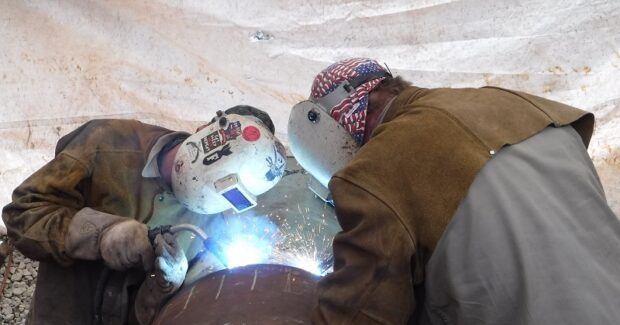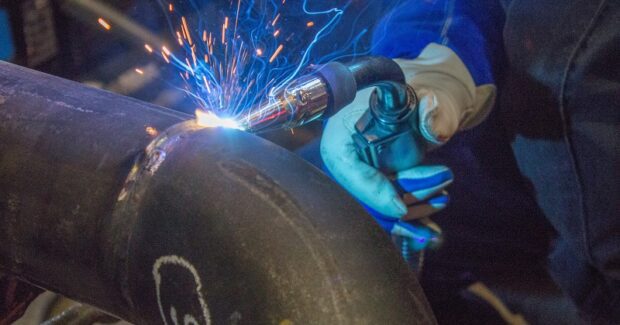Four Questions About Qualifying Wire and Advanced Wire Processes for the Jobsite
Resisting change is human nature, but change doesn’t have to be difficult. Qualifying different MIG, pulsed MIG or RMD welding procedures and processes for your jobsite is easier than you think – and a smart investment that can significantly improve productivity and save you money.
Posted: October 8, 2019
Investing in newer welding technologies and more productive processes can significantly improve efficiency and save money. But too often these investments are seen as a financial risk, or it’s mistakenly believed that more productive wire processes can’t be qualified for the jobsite, whether it’s construction, pipelines, power generation or shipbuilding. Looking beyond the standard procedures and processes you’ve always used can yield big returns for efficiency, productivity and savings while helping improve jobsite safety. We’ve tackled four frequently asked questions about qualifying wire or advanced wire welding processes for the jobsite to help you learn more about how easy it is to make changes and get results:
Q: Can wire processes be approved for the jobsite?
A: A wire welding process can be approved for structural applications more easily than you might think. Seattle-area contractor Apex Steel, Inc. (Kirkland, WA) switched from stick to self-shielded flux-cored welding with complete control of process and parameter changes at the wire feeder and saved up to two hours per welder per day. And for pipe field welding, highly efficient wire welding like pulsed MIG and Regulated Metal Deposition (RMD®), a modified short-circuit MIG process, can be approved. It requires qualifying the process to the welding procedure specifications (WPS). While this may involve an investment of time and money, it offers significant payback. A short-circuit process can be qualified under ASME and API codes when you write your procedure, as long as you denote heat inputs and all other weld procedure requirements along with the necessary nondestructive testing evaluation.
Q: Can the same welding processes be used in the shop and the field?
A: Many operations want processes that can be used both in the shop and on the jobsite, eliminating the need to qualify different procedures for each location. Wire welding and advanced processes like pulsed MIG and RMD provide that versatility. You can use them in the shop to save time and produce high-quality welds, and then pair an engine-driven welder/generator or a plug-in welder with a feeder accessory to get the same capabilities and increase efficiency in the field.
Q: Is it difficult or expensive to change welding procedures?
A: Making the switch in the welding procedure to qualify more productive processes is an investment, but it’s one that can quickly pay off through significantly improved productivity, enhanced safety, reduced rework, and less wasted material and consumables. For example, global energy infrastructure leader Enbridge Inc. (Calgary, AB) reduced weld time by 40 percent after converting from stick welding to pulsed MIG and RMD processes for pipeline repair and tie-ins.
Q: Does a welding process change require extensive training?
A: Some training is required, especially for welders who have always used stick and are less familiar with wire processes. But MIG, RMD and pulsed MIG welding have shorter learning curves compared to traditional stick and TIG. The advanced wire processes are more forgiving to variations in stickout and deliver a calm, stable arc, which is easier for operators to control.
Getting the answers: Resisting change is human nature, but change doesn’t have to be difficult. Qualifying different procedures and wire processes such as MIG, pulsed MIG or RMD welding for your jobsite is much easier than you may think – and it’s a smart investment that can significantly improve productivity and save you money.





